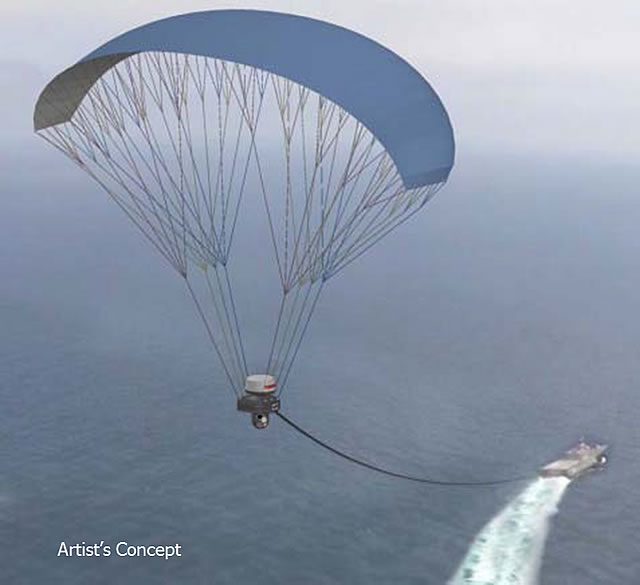|
At-sea
tests demonstrate technology that could improve communications and situational
awareness for large and small ships alike |
|||
Towed
Airborne Lift of Naval Systems (TALONS): DARPA’s TALONS effort seeks to develop a low-cost, fully automated parafoil system to extend small ships’ long-distance communications and improve their maritime domain awareness. Towed behind boats or ships, TALONS could carry ISR and communications payloads of up to 150 pounds between 500 and 1,500 feet in altitude—many times higher than current ships’ masts—and greatly extend the equipment’s range and effectiveness. Following successful ground-based tests, DARPA will conduct at-sea testing this year and potentially transition the technology to the U.S. Navy. “Through SideArm, TALONS and other projects, DARPA aims to make it much easier, quicker and less expensive for the Defense Department to deploy persistent ISR and strike capabilities almost anywhere in the world,” said Dan Patt, DARPA program manager. |
|||
DARPA’s Towed Airborne Lift of Naval Systems (TALONS) Concept Tested at Sea
- Posted On





 DARPA’s
Towed Airborne Lift of Naval Systems (TALONS) effort seeks to develop
a low-cost, fully automated parafoil system to extend small ships’
long-distance communications and improve their maritime domain awareness.
DARPA developed TALONS as part of Tern, a joint program between DARPA
and the U.S. Navy’s Office of Naval Research that seeks to enable
forward-deployed small ships to serve as mobile launch and recovery
sites for medium-altitude, long-endurance unmanned aerial systems.
and recovery sites for medium-altitude, long-endurance unmanned aerial
systems.
DARPA’s
Towed Airborne Lift of Naval Systems (TALONS) effort seeks to develop
a low-cost, fully automated parafoil system to extend small ships’
long-distance communications and improve their maritime domain awareness.
DARPA developed TALONS as part of Tern, a joint program between DARPA
and the U.S. Navy’s Office of Naval Research that seeks to enable
forward-deployed small ships to serve as mobile launch and recovery
sites for medium-altitude, long-endurance unmanned aerial systems.
and recovery sites for medium-altitude, long-endurance unmanned aerial
systems.




